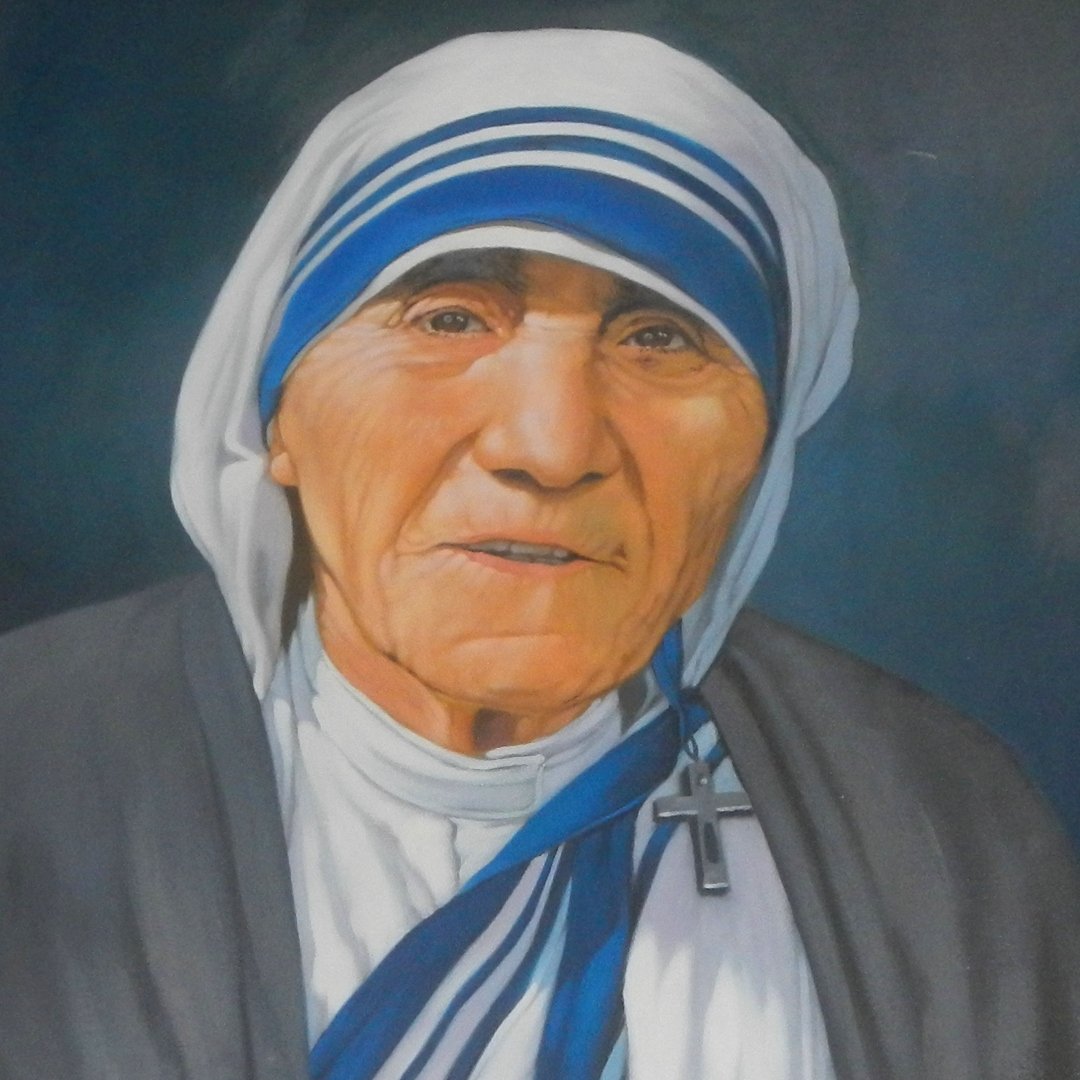
Lara Patangan ponders the example of a saint who embodied the virtues of humility and mercy.
Everyone asks you when you are little what you what to be when you grow up. Most kids I knew wanted to be something cool like a truck driver or a zookeeper. I just wanted to be a mom. This seemed like an ordinary vocation and so I was always trying to think of something more interesting. Mostly, I considered what I didn’t want to be. At the very top of that list, I knew with great certitude, was that I didn’t want to be a nun.

While I liked the Sisters who taught at my Catholic grade school, I couldn’t wrap my head around the solitude of not having a family. More superficially, I didn’t like the clothes nuns wore or that none of them wore lipstick or cute earrings. Yet, in the years since, I’ve become so enamored with the concept of religious life that I tell my husband that I’m going to join a convent after he dies. (I just need to find one that accepts cats and pink lipstick.)
I’m in awe of the Sisters I know and know of: the remarkable things they accomplish; the way they glow with peace and joy; and their humility that belies their power to indelibly change lives. Of course, no one embodied this more than Saint Teresa of Calcutta. She showed me how cool it was to be a nun. She taught me that there is more than one way to be a mother—and more importantly, what it really means to be beautiful. Mother Teresa was mercy plain, simple, and profound. She didn’t need frivolities because the beauty she exuded came from the purity of her love for God. It radiated.
She brought mercy into the mundanity of care for the sick and dying by doing small things with great love. And by extension, she showed the world how small things become big. Her appeal was universal, and her legacy and influence extend beyond what the best statisticians could measure just in my life alone.

I recently read To Love and Be Loved: A Personal Portrait of Mother Teresa by Jim Towey. In the mid-1980s, Towey had the honor of meeting Mother Teresa while he was a congressional staffer and lawyer. He tells the remarkable story of their unique friendship and how it changed the course of his life. Towey handled many of Mother Teresa and the Missionaries of Charity’s legal affairs. He traveled with and helped expand Mother Teresa’s initiatives to care for the sick and the unwanted.
His book gives incredible insight and examples of this great saint that are so fitting with the aim of which she lived: simple stories of the magnitude of small acts. Certainly, Towey himself is one of those stories. On the day he met Mother Teresa and visited the Home of the Dying in India, he was sent to clean the wounds of a man with scabies. That’s not really what Towey in his starched white shirt and dress shoes expected, and neither was anything that came after.
That’s probably the best part of the story—of any story that involves God working in our lives—whether it’s Towey’s life, Mother Teresa’s, my life, or yours, is that we really can’t grasp all of the ways God will transform us and our small acts of love. We are often too afraid of what comes after to take the leap of faith to fully surrender our lives to God’s will. Yet the real takeaway of Mother Teresa’s life is that we can be saints too. We don’t have to join religious life or the Peace Corps or move to India. There are countless ways to practice mercy as an organic part of our daily lives regardless of our vocation. These acts of mercy fall like dominos changing life after life spreading love ad infinitum.
Whether we are nine or ninety, perhaps the answer to the question of what we want to be when we grow up should be the same regardless of whether we are truck drivers, teachers, mothers, lawyers, or sisters. We can be saints. And that has to be the coolest vocation, not only in this life, but in the next.

Copyright 2023 Lara Patangan
Images: Mother Teresa painting JudgefloroDerivative work: TharonXX, Public domain, via Wikimedia Commons; all others Canva
About the Author

Lara Patangan
Lara Patangan is a freelance writer and inspirational speaker. A wife and mother of two boys, Patangan spent a year doing works of mercy. She writes about the life-changing power of mercy at LaraPatangan.com in a way that is humorous, relatable, and rife with humility. Her book, SimpleMercies: How the Works of Mercy Bring Peace and Fulfillment, is available for purchase wherever books are sold.


.png?width=1806&height=731&name=CatholicMom_hcfm_logo1_pos_871c_2728c%20(002).png)
Comments